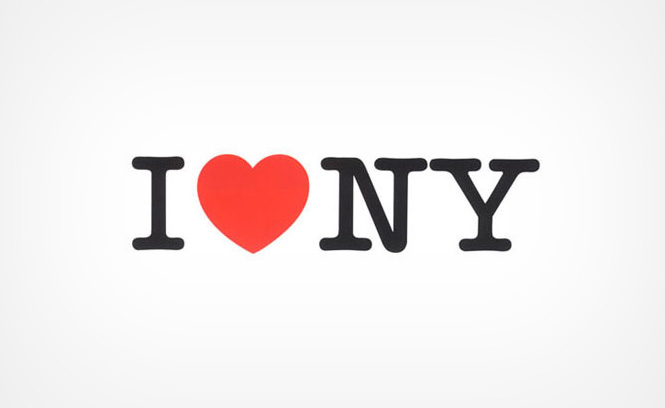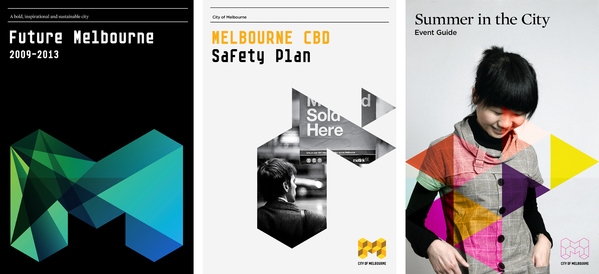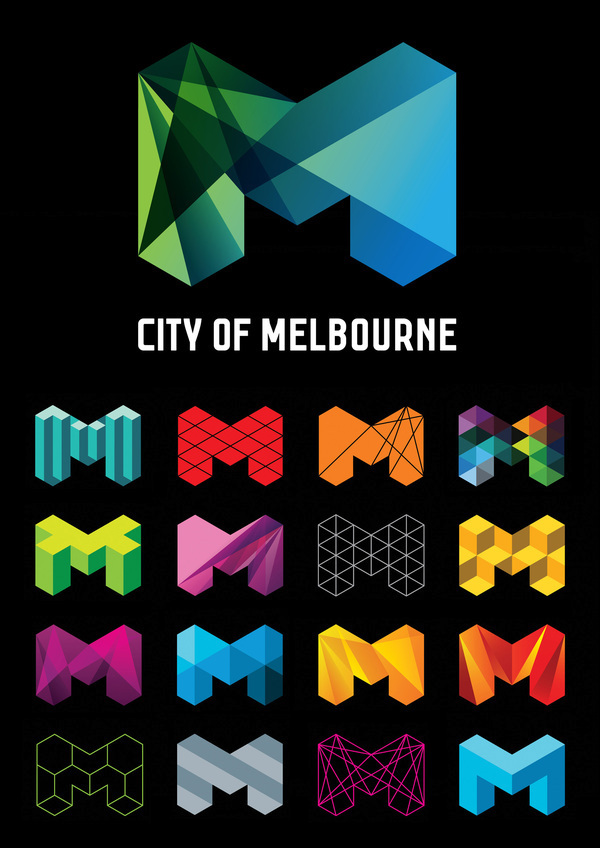Introduction
Did you know branding isn't limited to businesses, organizations, and individuals? This strategic concept can promote cities and put them on the map. Yes, you can brand places, too!
These cities, from London, New York, and Paris to Tokyo, Bangkok, and many iconic locations, have leveraged branding to establish their unique identities. While the process shares foundational principles with other branded products and services, city branding is more complex.
Let's explore what it takes to brand a city!
What Is City Branding?
City branding, urban marketing, or place branding involves applying promotion techniques and strategies to a place. It aims to create an identity unique to the city, shaped by its people, economy, politics, culture, and history.
These elements form the city brand's foundation, creating a positive perception that attracts people and investors.
Compared to other types of branding, city branding often takes a year or more to implement and achieve desired results. It requires careful planning and the participation of different government agencies, businesses, organizations, and city residents.
Given the multifaceted nature of urban identity development, partnering with an experienced branding services agency can help distill a city’s character into a brand system that scales over decades.
So, why should a city invest in branding?
Advantages of City Branding
City branding is a powerful tool that can elevate a place's economic status, attract tourists, secure investors, and further shape a close-knit community. Let's parse these below.
Economic Gains
City branding is a proven approach for places looking to increase their economic success. Raising awareness of what a place offers can become a popular tourist destination. This amplified visibility encourages local businesses to step up and develop products and services unique to the town.
Through effective branding, a city can also persuade investors to set up companies if there is potential for an emerging market. Cities with a strong and reliable reputation—especially those with government policies that support small businesses and foreign investors—become attractive spaces for entrepreneurs to thrive.
Social and Cultural Impact
A place is defined by its people. City branding offers a chance to showcase its unique culture and celebrate its soul. It also opens opportunities for the community to unite and show their support for important causes in the city.
When the locals take pride in their city, it solidifies its presence on the map and ensures that future generations inherit something valuable.
Four Key Strategies for an Effective City Branding
City branding may look different from one place to another, depending on factors like resources, branding goals, and the community. But here are four key strategies you can implement for more effective city branding.
1. Leverage Your USP (Unique Selling Point)
A city's USP or Unique Selling Point sets it apart, attracting visitors, businesses, and residents. Take the city of Rome, which is celebrated for its rich cultural heritage dating back centuries. Home to ancient ruins and majestic art and architecture, Rome is also the only city in the world with a country, the Vatican, inside it.
When identifying a city's USP, consider its historical significance, abundant resources, a blend of cultures, and economic landscape. For example, a place might foster a thriving environment for startups, making it appealing to entrepreneurs looking for exciting opportunities.
This approach to assessing a city's USP allows for a deeper understanding of its strengths and opportunities, which helps you position it in the market.
2. Engage and Include the Community
The secret to city branding is the participation and support of the local community. They bring life to an otherwise concrete jungle, making them a vital element in your branding efforts.
Why not weave storytelling into your branding narrative? Aside from sharing how the city came to be, spotlight the everyday heroes who embody the brand's soul. They could be local farmers, doctors, teachers, and police officers. Highlight how the city is also enriching the lives and future of the youth.
Engaging with your community also illuminates issues the city could address to improve. For example, initiate forums and discussions that let diverse groups voice the significant impacts they are experiencing and expecting. Start relevant conversations and adapt as needed.
Having unwavering commitment from your community can ensure that your brand continues to grow and evolve for the better.
3. Highlight History, Arts, and Culture
A city's history, arts, and culture are its most valuable brand assets. These add color to a place, shaping its personality, tone, and identity. They also influence people's perceptions and create a meaningful and authentic city brand experience.
One way to leverage history, arts, and culture is to develop events that highlight them. Some famous examples are Munich's Oktoberfest, Rio de Janeiro's Carnival, the Cannes Film Festival, and Pamplona's Festival of San Fermin (running of the bulls).
Showcase and educate people and businesses on local crafts, food, and music. These can also result in a diverse and memorable tourist experience.
4. Utilize Digital Media and Technology
Digital platforms and technology are vital to a city's branding efforts. They make communication easier, reaching people of all ages and across borders via social media platforms and other online channels. They also allow for creativity, as content can be made in different formats, increasing engagement.
Nowadays, cities are also using technology to increase accessibility to information. In addition to digital displays, scannable QR codes help direct people to details about upcoming events, do's and don'ts, and a city map. Government apps are also available to streamline processes and keep connected with residents.
Tech and digital media can also be a great way to collect feedback and data on consumer behavior. In return, these can inform the government and branding team on how to better the lives of the people in the city.
Road to Success: Best City Branding Examples
A thriving city brand showcases its unique assets, values, and vision. Let's explore how some of the best cities, like Amsterdam, New York, and Melbourne, highlighted best practices in their branding efforts.
Amsterdam: I Amsterdam
Before the city branding, two things often come to mind whenever people think of Amsterdam: sex and narcotics. It is a haven for the youth looking to explore the wild side of the city rife with "coffee shops," strip clubs, and other X-rated activities. However, the lack of public order did not feel right with potential investors and its residents.
Cities in Spain and other European countries were also more attractive. These factors have created tension between locals and tourists who are there to party excessively. But there's more to this little town than the red district area, De Wallen, offers.
The City Branding Campaign
The rebrand campaign aims to create a paradigm shift, highlighting Amsterdam's creativity, innovation, and commerce values. It wishes to revitalize the city's economy and embed pride in the minds of its residents. To summarize the city's mission and values in one slogan, they came up with "I Amsterdam."
It is inclusive, enticing locals and its diverse population to identify with the city. Moreover, it pushes people to aspire for a better community, lifting Amsterdam's image to be a town where one could study, work, visit, and have a bright future.
The new city identity takes inspiration from its historic past. For instance, the campaign uses a color palette of red, black, and white based on the Amsterdam flag. This color scheme is used on merchandise, ads, and other branding collaterals.
The city also invested in paid digital ads when potential tourists searched for Amsterdam online. These ads highlight Amsterdam's do's and don'ts for keeping peace and order, like fines for littering and public noise. They also showcase restaurants, hotels, and tourist spots to visit.

Amsterdam uses social media to promote its incredible architecture and city landmarks. Image via Instagram
The Results
The campaign's support of businesses and locals in Amsterdam has increased the number of tourists in the city. Local companies echoed this, reporting a boost in their profits as people became more aware.
It has also made global waves, as evidenced by visiting influencers who promote Amsterdam's culture and exciting spots. Most importantly, it has instilled pride within the community, further fueling their engagement with the city.
New York City: I Love New York

Milton Glaser, the artist behind NYC’s logo, came up with the design while on a cab ride. Image via Milton Glaser
I Love New York is one of the most successful and iconic campaigns in the history of city branding. It is so iconic that the hand-drawn logo is in the Museum of Modern Art. But how did the campaign begin?
New York has only sometimes been a good place to be. In the early 1970s, before the campaign started, it was a violent place known for rampant crimes, filthy streets, and vandalism. The city was up to its neck as it wrestled with economic challenges that threatened to put it into bankruptcy.
In short, New York was far from lovable, resulting in a lost community with a defeatist attitude. Realizing the looming catastrophe that will ruin the city, it has teamed up with advertising agency Wells Riche Greene to rebuild its brand image.
The City Branding Campaign
Taking its cue from Broadway's popularity in New York, the I Love NYC campaign displayed grandiosity and theatrical elements. Singers, dancers, and actors graced TV ads aired in North America as they performed the much-loved campaign jingle.
The logo is also easy to notice. Its hand-drawn heart symbol represents love—a simple yet strategic design element everyone understands. Soon after, the I Love New York logo became a famous icon on shirts, caps, totes, and print ads scattered around the city. Tourism was up with increased hotel occupancy across districts. Broadway was full.
There was a sudden shift in the market as more people caught wind of New York. You wouldn't think city branding would save New York from economic disaster, but it did just that and more!
It rejuvenated the locals' trust in the government. People found pride in being New Yorkers and shared their culture.
Since its inception in 1977, the spirit brought to life by the campaign still lives on. Souvenirs and other merchandise bearing the slogan are in high demand among tourists.
From a city in dire straits, New York is now home to companies and organizations—large and small—and a uniquely diverse culture.
Melbourne: Flexible and Modern Logo Redesign
Fifteen years after its logo launch, Melbourne is ready for an image overhaul. Regarded as one of Australia's creative jewels, Melbourne is moving towards a more modern, fun, and youthful look. With a $200,000 price tag just on the logo alone, did the city achieve its goals?
The short answer: Yes.
The City Branding Campaign

The city’s new logo encapsulates a fun, modern, and vibrant look using colors and geometric shapes. Image via Visual Fizz
Melbourne has changed so much in the last decade that the old logo no longer reflects the city's current identity. As a result, its rebranding campaign aimed to capture the city's transformed character—fun, vibrant, modern, and diverse—in its logo.
The new logo combines geometric shapes, forming a vast 'M' for Melbourne. It creates a dynamic image through the city brand's color palette in different shades to demonstrate its flexibility in design. The logo also exudes a sense of playfulness, stimulating the imagination while remaining authentic to the city's identity.

Brand configuration of Melbourne’s logo in varying colors and geometric lines. Image via Behance
The logo has become an instant hit. It is easily recognizable and adaptable for both formal and informal settings.
The City Mayor at the time of the logo's launch shared, "The 'M' design will become an icon for Melbourne, synonymous with the modern, vibrant, cool city Melbourne is today and will continue to be in the future…It will build greater long-term identification and align with best practices worldwide."
The Results
The new identity was a significant factor in delivering results for the city. Since its launch, it has been used in various campaigns, increasing the city's recognition. The local community has also followed through with the brand's mission, making Melbourne one of the top liveable cities in the world as ranked by the Economist.
Inclusivity and Diversity in City Branding
The A DEI-powered branding campaign ensures equal representation of every demographic within the city's locale. These initiatives help emphasize the values of the place, particularly in recognizing minorities.
When a city embraces social inclusivity, it resonates with different groups and builds its reputation. Deep and meaningful relationships form, enticing people and businesses to become part of the local community.
Some efforts you can implement to boost your city branding include: * Partner with community leaders when shaping the city's brand identity. * Translate messages in multiple languages to reach people from diverse groups. * Create content and explore social media platforms that target different demographics. * Leverage technology and other digital means to amplify connection. * Celebrate the city's heritage with events, festivals, and attractions. * Promote inclusive policies and initiatives for marginalized communities.
Build a City Brand
City branding can be a powerful tool when done right. It can promote your city to other parts of the world, boost the economy, and empower locals. We've witnessed cities like New York, on the brink of failure, rise and reclaim their place on the map. Of course, achieving such results takes dedication, commitment, and careful planning.
Effective city branding also requires close monitoring and adaptation to the community's changing demands. By following industry best practices and trends that resonate with your brand, you are well on your way to efficiently showcasing a city with attractive tourism and investment potential.
Sep 16, 2024
